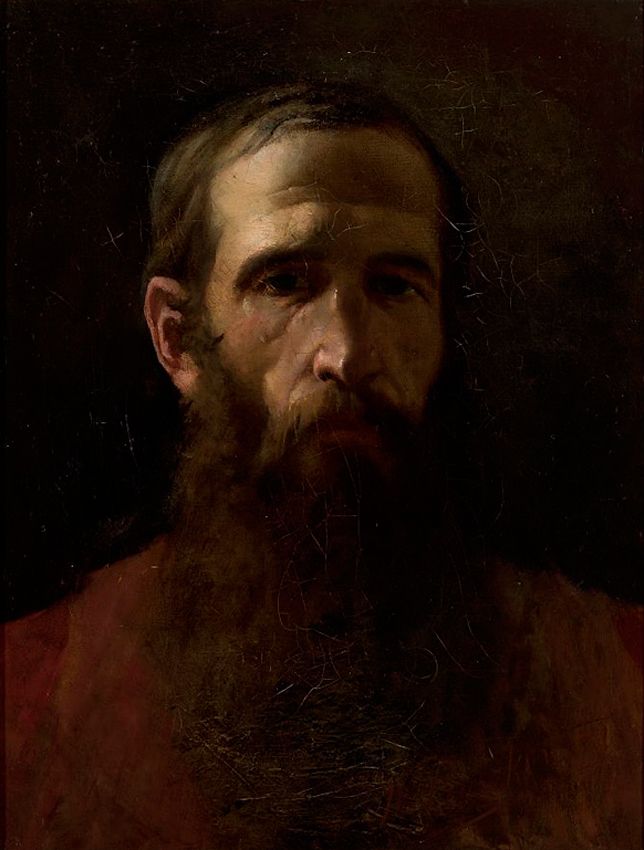Aleksander Gierymski
Mediathek Sorted
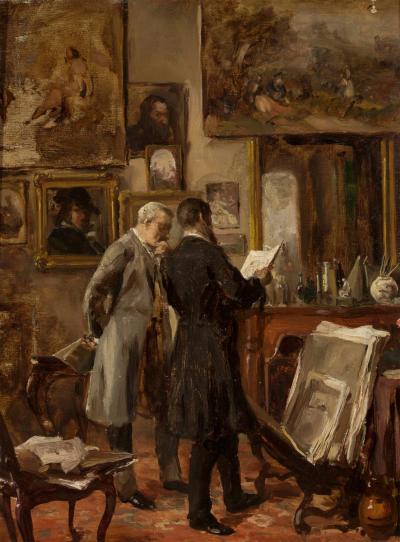
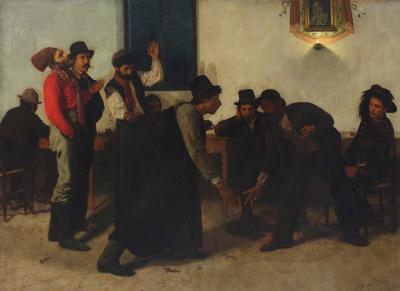
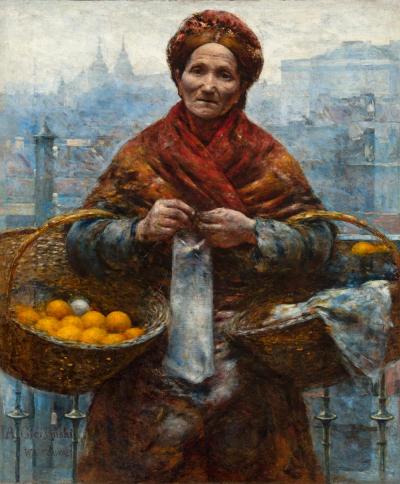
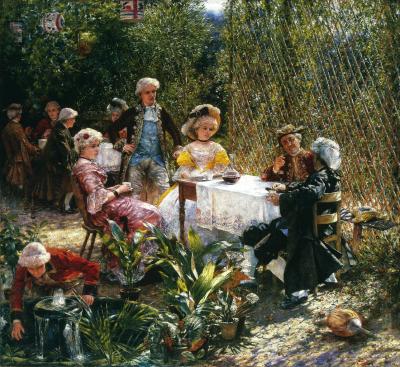
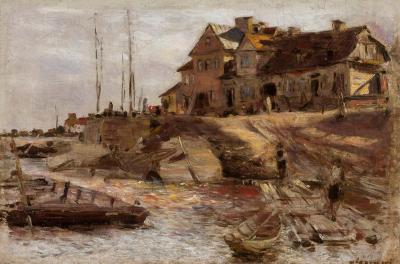
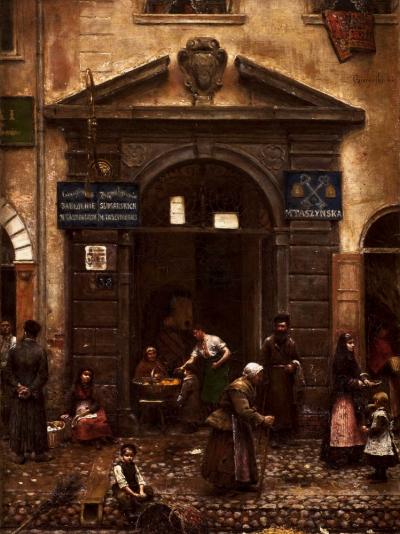

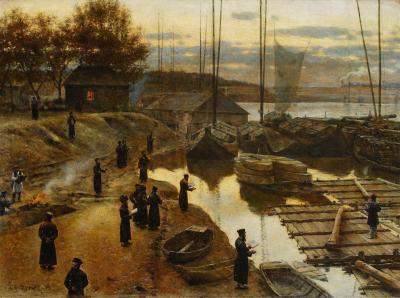

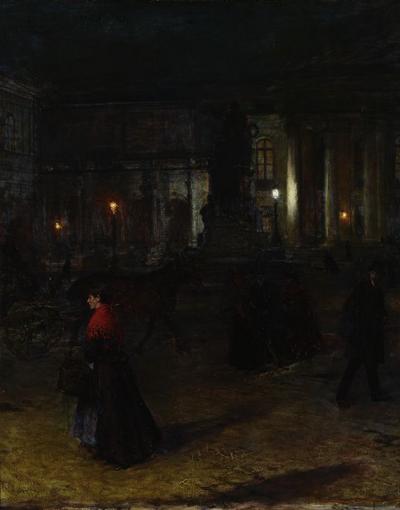
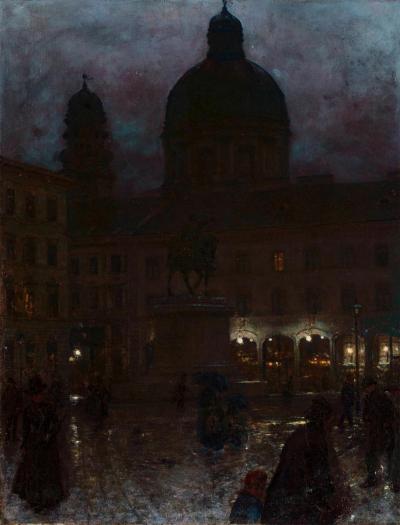
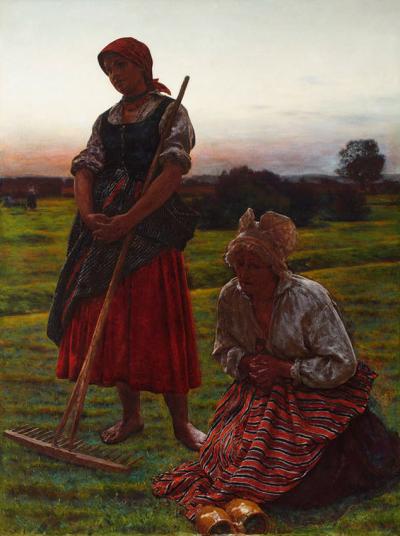
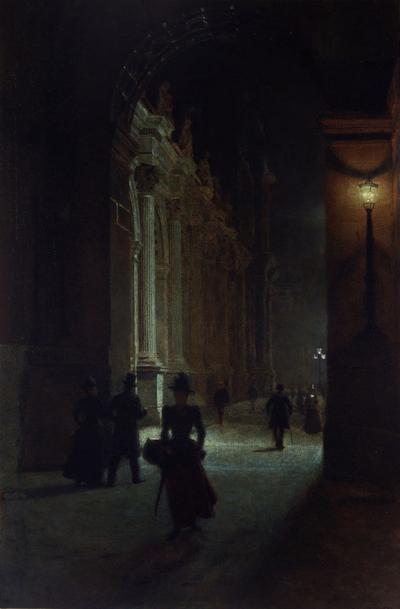
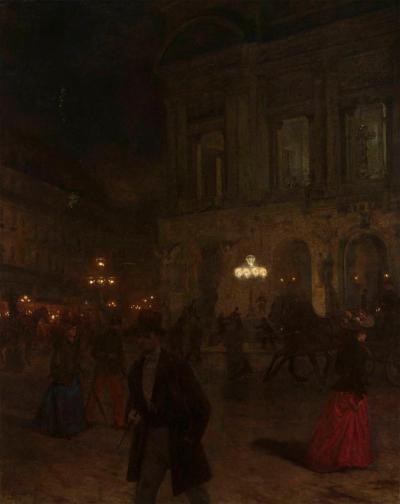
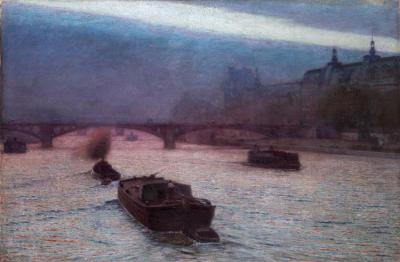



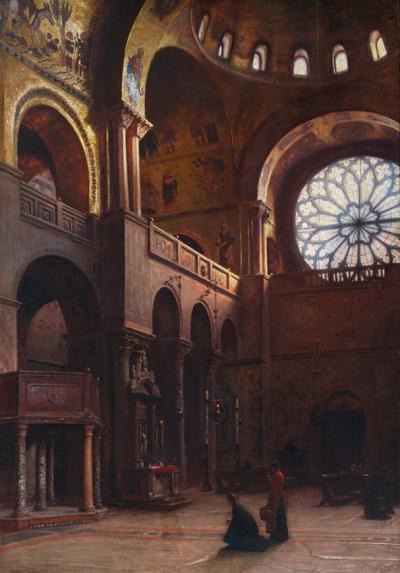

The fact that the new Munich paintings corresponded to aristocratic tastes is also shown by the commission he was given by the Lithuanian Baron Ignacy Korwin-Milewski (1846-1926) to paint similar motifs of Paris. Milewski, an art collector, political writer and traveller, had clearly taken courses in painting at the Munich Academy in 1875 where he had joined the circle of Polish artists and become an enthusiastic follower of their paintings. In order to fulfil this commission Gierymski travelled to Paris in autumn 1890. Here he completed his night-time views of the Louvre and the Paris Opera House (Ill. 13, 14), in both of which he made even stronger contrasts between light and shade.
But Gierymski also used his stay in Paris in order to study French painting. He busied himself intensively with the realism of Jean-François Millet, as is shown in his version of the Angelus motif (Ill. 12), that he executed at a time when Millet’s painting L'Angelus (1859) was all the rage. In 1889 it was sold to America after heated bidding between the Parisian Sedelmeyer Gallery and the American Art Association. In 1890 the painting was resold to Paris at a huge profit to become part of the Alfred Chauchard’s collection. By contrast with Millet’s painting which shows a pair of peasants at prayer facing each other during the ringing of the evening angelus that marked the end of the working day, Gierymski shows two women at prayer, one standing and the other kneeling, in a diagonal front view that fills the picture. Millet’s pitchforks and baskets are replaced by a rake and pitchers, whereas the broad landscape and the furrows in the earth are treated in a similar fashion. But the greatest difference is in their use of colour. Whereas brown tones dominate in Millet’s painting, thereby emphasising the arduous nature of peasant’s work, Gierymski chooses bright colours that mainly reflect the clothing of the women in a folklore manner – a style that was mainly used by the Polish painters in Munich when they turned to themes related to Polish history and popular culture.
Gierymski mainly studied Impressionist painting in Paris where he changed his painting style once again. He prepared his large-scale painting Evening on the Seine (Ill. 15) by making a huge number of preliminary studies and chose the Divisionist painting style used by the Impressionists, where the colours and light reflections are divided into basic colours and complimentary contrasts in a similar manner to that used by Claude Monet in his series of pictures entitled Les Meules (engl. The Haystacks, 1888-90). Even after Gierymski returned to Poland at the end of 1893 he continued to adopt this style of painting. He moved for a while to Krakow, probably because he had been offered a leading position at the Academy of Visual Arts (Akademia Sztuk Pięknych). Here he painted impressionist pictures of sunny landscapes, streets and genre scenes, alongside portraits of the inhabitants of the Krakow suburb of Bronowice. The painting The Peasant’s Coffin (Ill. 16), also belongs to this series: it shows a peasant couple in quiet desperation in front of the coffin of their dead child with the coffin lid leaning against the side of the house. That said, the impressionist style has been smoothed out into a folklore quality.





















































































